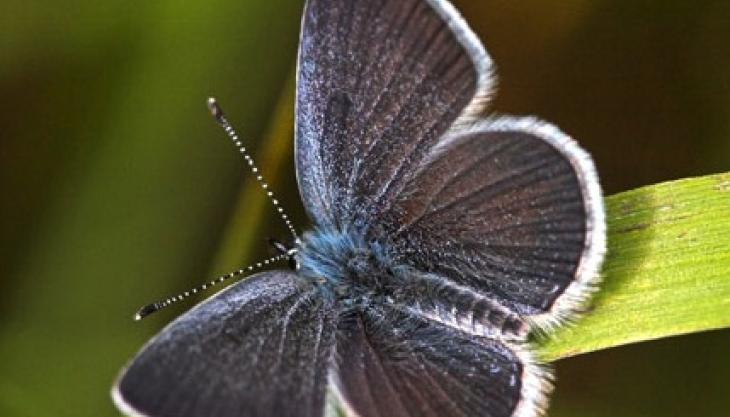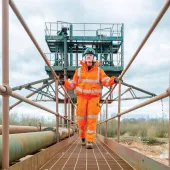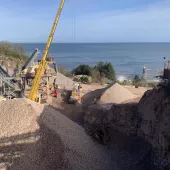Helping to give nature a home

CEMEX UK exceed their own target by creating 660 hectares of conservation habitat in five years
CEMENT production, quarrying and concrete batching may not seem like obvious ‘bed fellows’ with nature, but this month CEMEX UK announced that well in excess of 600 hectares of conservation habitat designed to encourage wildlife have been created on the company’s land in the past five years.
In 2010, CEMEX launched a Biodiversity Strategy in partnership with the RSPB and made a commitment to give nature a home with the creation of 100 hectares a year.
With 660 hectares of habitat – an area equivalent to more than 850 football pitches – created in just five years, this target has been well exceeded and has resulted in some rare and endangered species, as well as the more common ones, making their homes on CEMEX land.
For example, the Small Blue butterfly, which has been saved from the brink of extinction, has started to flourish with five new colonies established at CEMEX’s Southam and Rugby cement sites, while the fast-declining turtle dove, which has seen numbers decrease by 95% in the UK since 1970, is being given a chance with land around three of the company’s quarries being seeded with a special flower mix to provide the bird with its ideal food.
And it is not only rare species that are being given a home, but ones that are generally thought of as more commonplace, such as the house sparrow, although these too are in decline, with the UK population having fallen by almost 70% in the last 20 years.
CEMEX workers at sites throughout London have been involved in putting up special feeding boxes, sowing wildflowers for food and monitoring their local house sparrow population.
On a larger scale, quarry restoration provides an opportunity to deliver significant priority habitats. For example, in partnership with the RSPB, CEMEX’s Rugeley Quarry, close to Cannock Chase in the Midlands, is gradually being restored to deliver substantial heathland mosaic habitat following the quarrying of sand and gravel at the site.
Rob Doody, CEMEX UK’s aggregates operations director, said: ‘The creation of biodiversity habitats is an important part of nature conservation for us. It’s a balance between providing the building materials that we all want and need to build homes, hospitals, schools, roads and much more, and the impact on the natural world around us.
‘We own more than 4,000 hectares of land in this country, which, in partnership with the RSPB, gives us a great opportunity to enhance the natural environment.’
Sam Tarrant, who leads on CEMEX’s partnership with the RSPB, commented: ‘Businesses are now playing an increasingly important role in delivering biodiversity conservation. CEMEX have achieved a great deal for nature over the last five years and we are delighted to be working with them in helping to give nature a home.’







